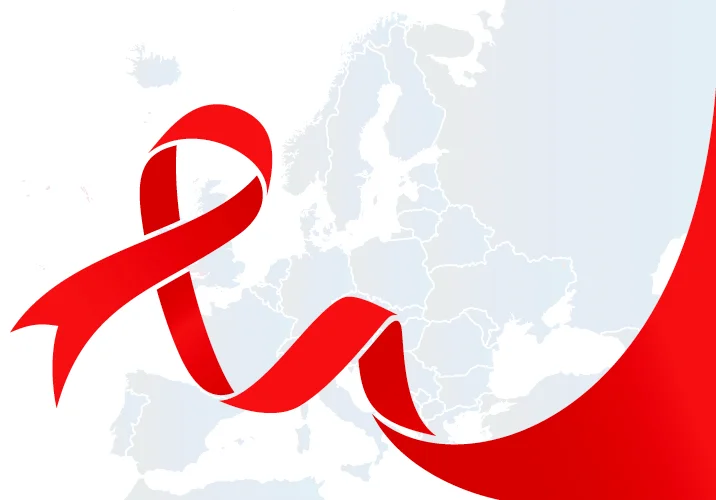HIV Stigma: How to Tackle HIV Stigma in 2024
- HIV stigma remains a critical trouble in 2024 notwithstanding training and treatment advances.
- Anticipated stigma causes PLHIV to avoid healthcare and trying out.
- Structural stigma from laws and rules reinforces stereotypes.
- Social assist and public training campaigns can assist lessen stigma.
HIV stigma refers to negative attitudes and beliefs closer to humans living with HIV (PLHIV). Since the early days of the HIV epidemic, those with the virus have confronted discrimination and social isolation. Despite essential advances in remedy and public expertise over the last a long time, HIV stigma persists and continues to effect PLHIV.
Examples of HIV Stigma
HIV stigma can take many forms:
- Social exclusion – PLHIV may be rejected by family, friends, and partners.
- Employment discrimination – PLHIV may be fired or denied jobs due to their status.
- Harassment and violence – PLHIV may experience verbal abuse or physical attacks.
- Internalized stigma – PLHIV may feel shame, guilt, and low self-worth.
A 2022 survey by the Kaiser Family Foundation observed 24% of Americans nonetheless say they could sense uncomfortable having their meals organized through a person with HIV. 19% could be uncomfortable having a roommate with HIV. Such records suggest widespread stigma no matter HIV being doable and non-contagious while dealt with. Using apps like Positive Singles will never make you feel that you are alone.
Effects of HIV Stigma
HIV stigma has many harmful effects:
- PLHIV experience isolation, depression, and lower quality of life.
- It deters people from getting tested and disclosing status to partners.
- It leads to avoiding healthcare services and lower medication adherence.
- It perpetuates transmission by discouraging testing and treatment.
One study found anticipated HIV stigma was associated with avoiding doctors and missing medications. Experiencing stigma from healthcare providers also reduces care engagement.
HIV stigma particularly impacts certain groups, including gay and bisexual men, people of color, sex workers, and transgender people. These groups face compounded stigma related to other aspects of their identities.
Causes and Drivers of HIV Stigma
HIV stigma stems from multiple sources:
- Fear of contagion – Misconceptions about HIV transmission risks despite low risks when treated.
- Associations with “immoral behavior” – Connections with homosexuality, sex work, drug use.
- Lack of public awareness – Ignorance about HIV basics and societal advancements.
- Social inequality and marginalization of key population groups.
Ongoing structural stigma in laws, policies, and institutions also perpetuates HIV stigma. Examples include:
- HIV criminalization laws that further stigmatize PLHIV.
- Restrictions on entry, stay and residence for PLHIV.
- Lack of legal protections against HIV discrimination.
Ways to Reduce HIV Stigma
While HIV stigma remains stubbornly continual, proof shows stigma may be decreased through training, advocacy, and social change. Some promising techniques include:
Public Education Campaigns
- Mass media campaigns – Destigmatizing PSAs and ads via TV, radio, social media, etc.
- Community outreach – Local education programs and workshops.
- Curriculum integration – Teaching youth accurate info on HIV.
Social Support Programs
- Support groups – Connecting PLHIV to share experiences.
- Counseling and mentoring – Providing mental health services.
- Income generation – Economic empowerment initiatives.
Policy and Legal Reform
- Decriminalization – Removing HIV criminalization laws.
- Anti-discrimination laws – Prohibiting HIV-based discrimination.
- Changes to entry/residency restrictions – Removing HIV travel bans.
| Examples of HIV Stigma | Effects of HIV Stigma | Ways to Reduce HIV Stigma |
|---|---|---|
| Social exclusion | Isolation and depression | Public education campaigns |
| Employment discrimination | Reduced healthcare engagement | Support groups for PLHIV |
| Harassment and violence | Increased transmission | Policy and legal reforms |
| Internalized stigma | Lower medication adherence |

Shahid Maqsood is an experienced writer and journalist with 10+ years in the industry. He is Content writer and Editor , where he writes daily articles covering topics like books, business, news, sports, and more. Shahid holds an MBA from Virtual University of Pakistan and a Master’s in Mass Communications. He is based in Faisalabad, Pakistan.
His work spans multiple platforms like dosttrusty.com and newsbreak.com,Quellpress.com , airriflehunting, and bruitly.com showcasing his versatility and depth. Shahid’s insightful articles reflect his expertise, authoritativeness, and trustworthiness, making him a respected and reliable voice in digital content creation. His contributions engage and inform readers, embodying professionalism and passion in every piece.



![Best Immune Booster For Toddlers South Africa [2022]](https://dotsnel.com/wp-content/uploads/2022/02/best-immune-booster-for-toddlers-south-africa-1-768x401.png)


![Washzilla UK Reviews [2022]: Washwashing clothes with the Laundry Ball](https://dotsnel.com/wp-content/uploads/2021/12/sjfj-1-768x621.png)
